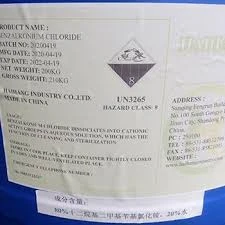coagulant flocculant
Understanding Coagulants and Flocculants The Keys to Water Treatment
In the quest for clean water, coagulants and flocculants play pivotal roles in the water treatment process. These chemical agents are essential in various applications, from municipal water supply to industrial wastewater management. Understanding their functions, differences, and applications is crucial for optimizing water treatment systems.
What are Coagulants?
Coagulants are chemical substances that promote the aggregation of particles in water, facilitating their removal. They are typically used in the initial stages of water treatment. Common coagulants include aluminum sulfate (alum), ferric sulfate, and polyaluminum chloride. When introduced to water, they neutralize the charges on suspended particles, allowing them to cluster together and form larger aggregates known as flocs. This process is often referred to as coagulation.
The mechanism of coagulation relies heavily on the concept of charge neutralization. In untreated water, particles, including silt, clay, and organic matter, often carry negative charges, which repel each other and hinder aggregation. Coagulants effectively neutralize these charges, allowing particles to come together and form larger masses that can be easily removed from the water.
The Role of Flocculants
Following coagulation, flocculants come into play. These are high-molecular-weight substances that enhance the agglomeration of the flocs formed during the coagulation process. Flocculants can be organic (e.g., polyacrylamides) or inorganic (e.g., polysilicic acid). Their primary function is to increase the size and strength of the flocs, making them easier to settle out of the water or separate through filtration.
Flocculation involves gentle mixing, which helps the flocs to collide and bond together without breaking apart. This step is crucial in completing the water treatment process, as it ensures that the resulting flocs are sizable enough for effective removal through sedimentation or filtration methods.
coagulant flocculant

Importance in Water Treatment
The combined use of coagulants and flocculants is critical for effective water treatment. Their application drastically improves the clarity of water by significantly reducing turbidity caused by suspended solids. This is particularly important in drinking water treatment, where regulatory standards require specific turbidity levels to ensure the safety and quality of potable water.
In industrial settings, these agents are equally important. Processes such as pulp and paper manufacturing, food processing, and mining generate large volumes of wastewater containing various contaminants. The application of coagulants and flocculants helps in efficiently removing solids, thus reducing the environmental impact and ensuring compliance with wastewater discharge regulations.
Environmental Considerations
As beneficial as coagulants and flocculants are, their use comes with environmental considerations. Some coagulants, particularly aluminum-based ones, can lead to residuals that may be harmful if not managed properly. Earlier treatments typically involved large quantities of chemical agents, which could result in undesirable byproducts. However, advancements in water treatment technology and increased awareness of environmental issues have led to the development of more eco-friendly alternatives, such as bio-flocculants derived from natural sources.
Conclusion
In summary, coagulants and flocculants are essential components in the water treatment process. Their roles in particle aggregation not only enhance water quality but also contribute significantly to various industrial processes. Understanding the science behind their functioning allows for the optimization of water treatment practices, ensuring the provision of safe and clean water while considering environmental sustainability. As technology and research continue to evolve, the effectiveness and safety of these agents will likely improve, leading to better outcomes for both human health and the environment.
-
LK-319 Special Scale And Corrosion Inhibitor For Steel Plants: Advanced Solutions for Industrial Water SystemsNewsAug.22,2025
-
Flocculant Water Treatment: Essential Chemical Solutions for Purification ProcessesNewsAug.22,2025
-
Isothiazolinones: Versatile Microbial Control Agents for Industrial and Consumer ApplicationsNewsAug.22,2025
-
Scale Inhibitor: Key Solutions for Water System Scale PreventionNewsAug.22,2025
-
Organophosphonates: Versatile Scale Inhibitors for Industrial Water SystemsNewsAug.22,2025
-
Scale and Corrosion Inhibitor: Essential Chemical Solutions for Water System MaintenanceNewsAug.22,2025





